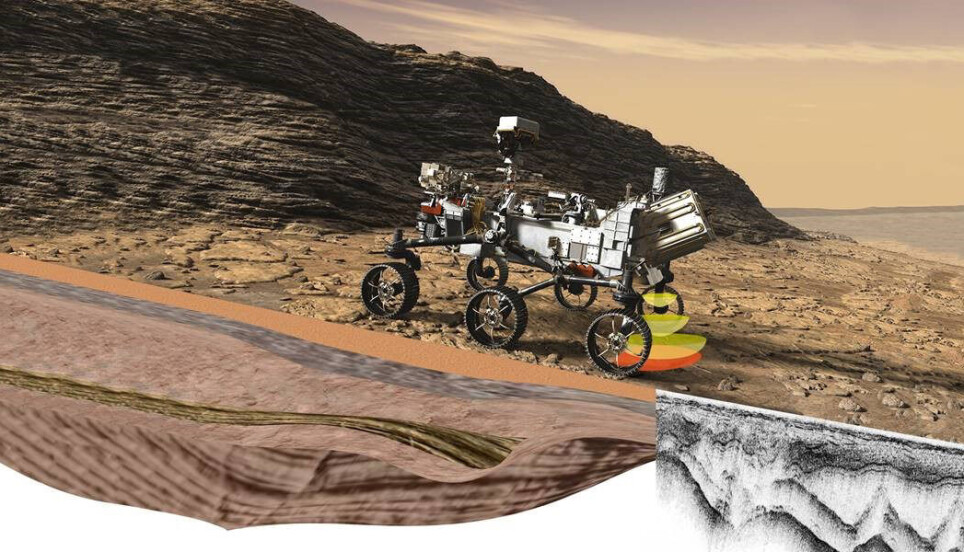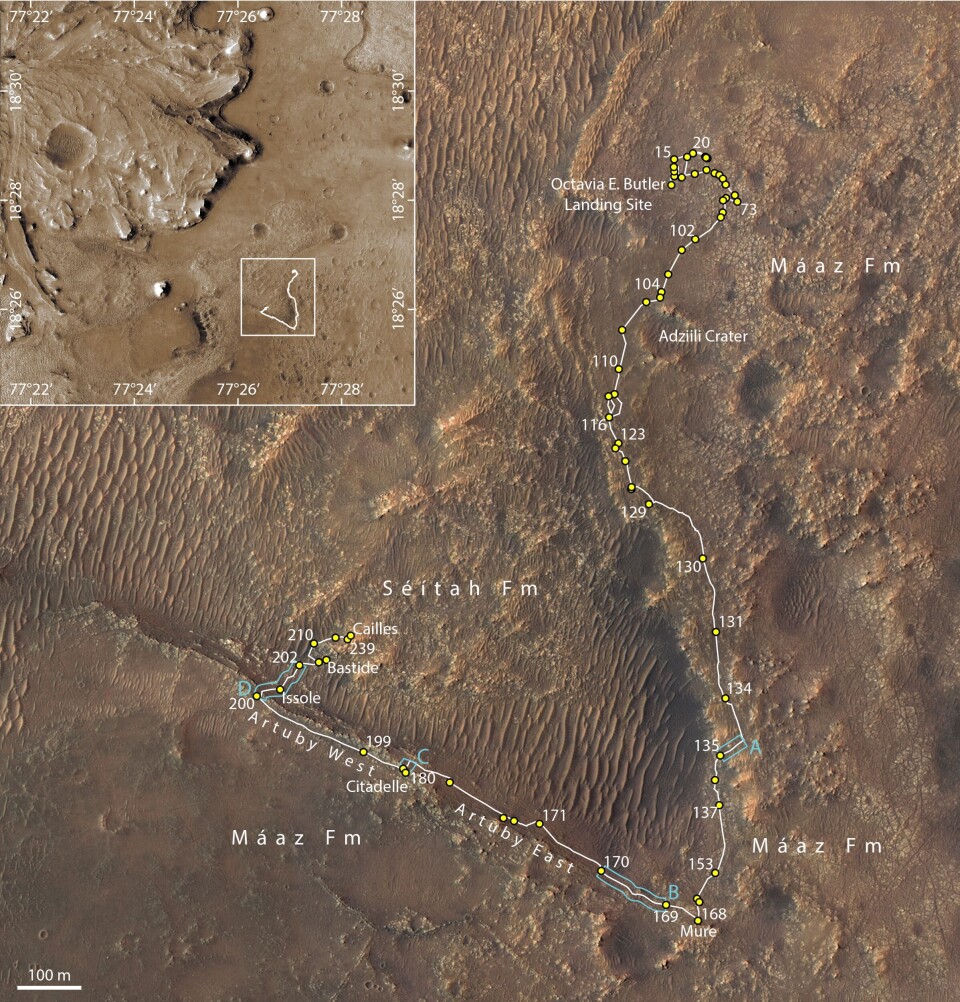THIS ARTICLE/PRESS RELEASE IS PAID FOR AND PRESENTED BY University of Oslo - read more

First report from RIMFAX: The geology of Mars is more complex than expected
For a year and a half, the ground-penetrating radar RIMFAX has collected data on Mars. Today, the first results from the Norwegian-developed instrument on Perseverance are published, led by Scientists from University of Oslo and University of California, Los Angeles.
In February 2021, the NASA rover Perseverance landed in the Jezero crater on Mars. Among the instruments on board is the Norwegian ground-penetrating radar RIMFAX, that collects data on the conditions beneath the surface of the ground.

“We believed this was the bottom of a lake with horizontal sediments,” says Professor Svein-Erik Hamran at the Department of Technology Systems at the University of Oslo.
For the first months, all layers were more or less horizontal. Just as you would expect when rocks are formed in layers on the seabed.
“We then entered an area where the layers dip downwards by up to 15 degrees. It was a surprise. We didn't expect to find that at the bottom of a lake. We realised that there were other processes involved and that the geology in the area was more complex than a simple seabed,” Hamran tells Titan.uio.no.
Hamran is the principle investigator of the RIMFAX instrument and the first author of scientific article published today in the journal Science Advances.
Sedimentary or volcanic?
The data now published are the very first to come from RIMFAX. They cover the first three kilometres of the rover's journey across the Red Planet. Hamran and his colleagues do not draw any final conclusions as to whether these are sedimentary or volcanic rocks.
“In our data, we see structures that are very similar to what we see on Earth as sedimentary layers. But they can also be volcanic layers formed in slowly cooling rocks,” Hamran says.
In the latter case, the slow change in temperature will produce layered rocks as different minerals precipitate at different temperatures. Then more volcanic material can come from the depths and lift up the horizontal layers and give the tilt of the layers that RIMFAX observes.
There are several reasons why it is difficult to draw conclusions.
“On Mars, the sedimentary rocks are formed from volcanic rocks, so it is very difficult to say whether it is sedimentary or volcanic,” Hamran says.
Will send samples back to Earth
NASA has plans to bring some of the rock samples from Perseverance back to Earth to analyse them more closely, but the samples alone do not tell the whole story.
“Context is very important when interpreting rock samples. If you ask a geologist to examine a rock, the first thing he asks is where you found it,” says Hamran.
That is why RIMFAX is important when the researchers now compile the findings from all the instruments that are active on Perseverance.
“We want to know as much as possible about the formation of the geology from where the samples are collected. RIMFAX can say something about how the geology is formed in the surrounding area,” the professor says.

Are there signs of life?
The main goal of the Perseverance rovers is to look for signs of life.
“We cannot say whether there is life or not, but the interpretations we make can say something about how the sediments were formed, how the stratification was laid. This in turn has an influence on how likely it is that there may have been life in that area,” Hamran explains.
Excitement will rise as Perseverance approaches a large delta on the edge of the Jezero crater. Scientists know that there has been water there, and for the time being the search for life stands and falls on water.
“This delta was the reason why we landed in the Jezero crater. We know there are sediments there, and we know they were formed in water,” Hamran says.
A lot to look forward to
Perseverance has moved a further nine kilometres after the collection of the data that is now presented.
“We see very interesting things, so a lot of exciting things will come later,” Hamran says.
He admits that he is relieved to get results from the instrument he has worked on for so long.
“We got results from day one. When the rover started moving, we saw that RIMFAX was working and we started getting data. We have spent many years building it, and it is very nice to be able to show that it works as intended and that we get good data,” Hamran says.
References:
Hamran et al.Ground penetrating radar observations of subsurface structures in the floor of Jezero crater, Mars, Science Advances, 2022.
Farley et al. 'Aqueously altered igneous rocks sampled on the floor of Jezero crater, Mars', Science, 2022.

This article/press release is paid for and presented by the University of Oslo
This content is created by the University of Oslo's communication staff, who use this platform to communicate science and share results from research with the public. The University of Oslo is one of more than 80 owners of ScienceNorway.no. Read more here.
See more content from the University of Oslo:
-
Putin’s dream of the perfect family
-
How international standards are transforming the world
-
A researcher has listened to 480 versions of Hitler's favourite music. This is what he found
-
Researcher: "AI weakens our judgement"
-
New, worrying trend among incels, according to researcher
-
Ship’s logs have shaped our understanding of the sea




































